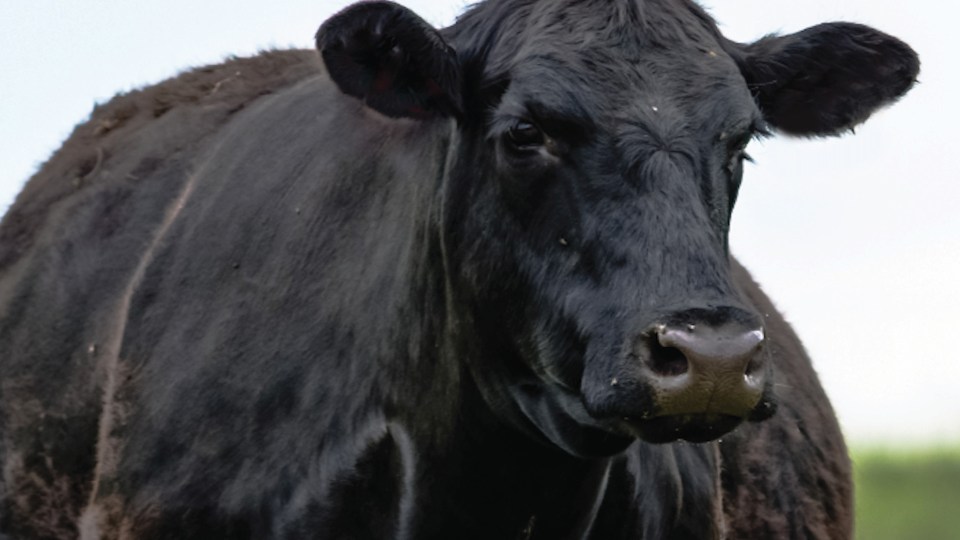How to set cows up for success at preg-check
By Dr. Brent Meyer
Pregnancy-check season is a time to identify and sell open cows. It’s important to help ensure pregnant cows deliver healthy, strong calves that will thrive in the face of normal neonatal challenges.
Aside from determining pregnancy and estimating calving dates, this is also a good opportunity to physically examine cows, evaluate body condition, and cover any vaccination and parasite control needs.
Determine vaccination needs for the cow
If the cow herd was not vaccinated in the spring before breeding, now is the time to consider boosting immunity against respiratory and reproductive diseases. Producers have access to either killed or modified-live vaccines.

Killed vaccines are safe for any stage of pregnancy, however, it is very important that modified-live vaccines are labeled as safe for us in pregnant cows. Modified-live vaccines should only be used if a cow has been vaccinated within the past 12 months with any of the modified-live IBR and BVD-containing vaccine(s) in this product line.
Vaccines providing protection against Bovine Viral Diarrhea (BVD), Infectious Bovine Rhinotracheitis (IBR), vibriosis and leptospirosis are essential. Prior to any vaccine use, please consult with your herd veterinarian.
Prepare for passive protection
Colostrum is king. Vaccinating cows prior to calving will stimulate antibody production that will result in higher-quality colostrum, ultimately giving calves better protection when they’re born.
For example, administering a scours vaccine 5-12 weeks prior to calving boosts antibody levels in the cow’s colostrum, providing increased protection from scours for the newborn calf.
BOVILIS® GUARDIAN® offers the broadest spectrum of antigens associated with major bacterial and viral causes of scours in young calves. This includes Group A rotavirus, coronavirus types 1 & 3, Clostridium perfringens types C & D, and Escherichia coli type K99. Be sure to follow the product label’s dosing regimen for first-calf heifers and subsequent calving.
Implement internal and external parasite control
Deworming helps cows better utilize nutrients — this is especially critical for cows in their second or third trimesters of pregnancy. Nutrients more effectively go toward fetal development and keeping the cow in good body condition, which impacts her ability to raise a healthy calf and rebreed.1
Not all dewormers are created equal. SAFE-GUARD® (fenbendazole) offers several formulation options – all demonstrating over 91% efficacy as determined by ongoing testing.2
Keeping the mama cow healthy and making sure energy and protein requirements are met is the best way to ensure a strong start to the next calving cycle.
Consult with your veterinarian to develop a preg-check program that is optimal for your operation.
Important Safety Information
Do not use in beef calves less than 2 months old, dairy calves and veal calves. A withdrawal period has not been established for this product in pre-ruminating calves. Additionally, the following meat withdrawal and milk discard times apply:
SAFE-GUARD Paste: Cattle must not be slaughtered for 8 days. For dairy cattle, the milk discard time is 96 hours.
SAFE-GUARD Suspension: Cattle must not be slaughtered for 8 days. For dairy cattle, the milk discard time is 48 hours.
SAFE-GUARD En-PRO-AL Type C Medicated Block: Cattle must not be slaughtered for 11 days. For use in beef cattle only.
SAFE-GUARD 20% Protein Type C Medicated Block: Cattle must not be slaughtered for 16 days. For use in beef cattle only.
SAFE-GUARD Type A and other medicated feed products (pellets, cubes, free-choice mineral or free-choice liquid): Cattle must not be slaughtered for 13 days. For dairy cattle, the milk discard time is 60 hours.
Resources
- Smith, R. A., Rogers, K. C., Huse, S., Wray, M. I., Brandt, R. T., Hutcheson, J. P., Nichols, W. T., Taylor, R. F., Rains, J. R., McCauley, C. T. Pasture deworming and (or) subsequent feedlot deworming with fenbendazole. I. Effects on grazing performance, feedlot performance and carcass traits of yearling steers. The Bovine Practitioner. 2000. 34(2), 104-114.
- Merck Animal Health FECRT database.
Find more content for your beef operation.
About the author

Brent Meyer, D.V.M., M.S.
Technical Services Veterinarian,
Merck Animal Health
